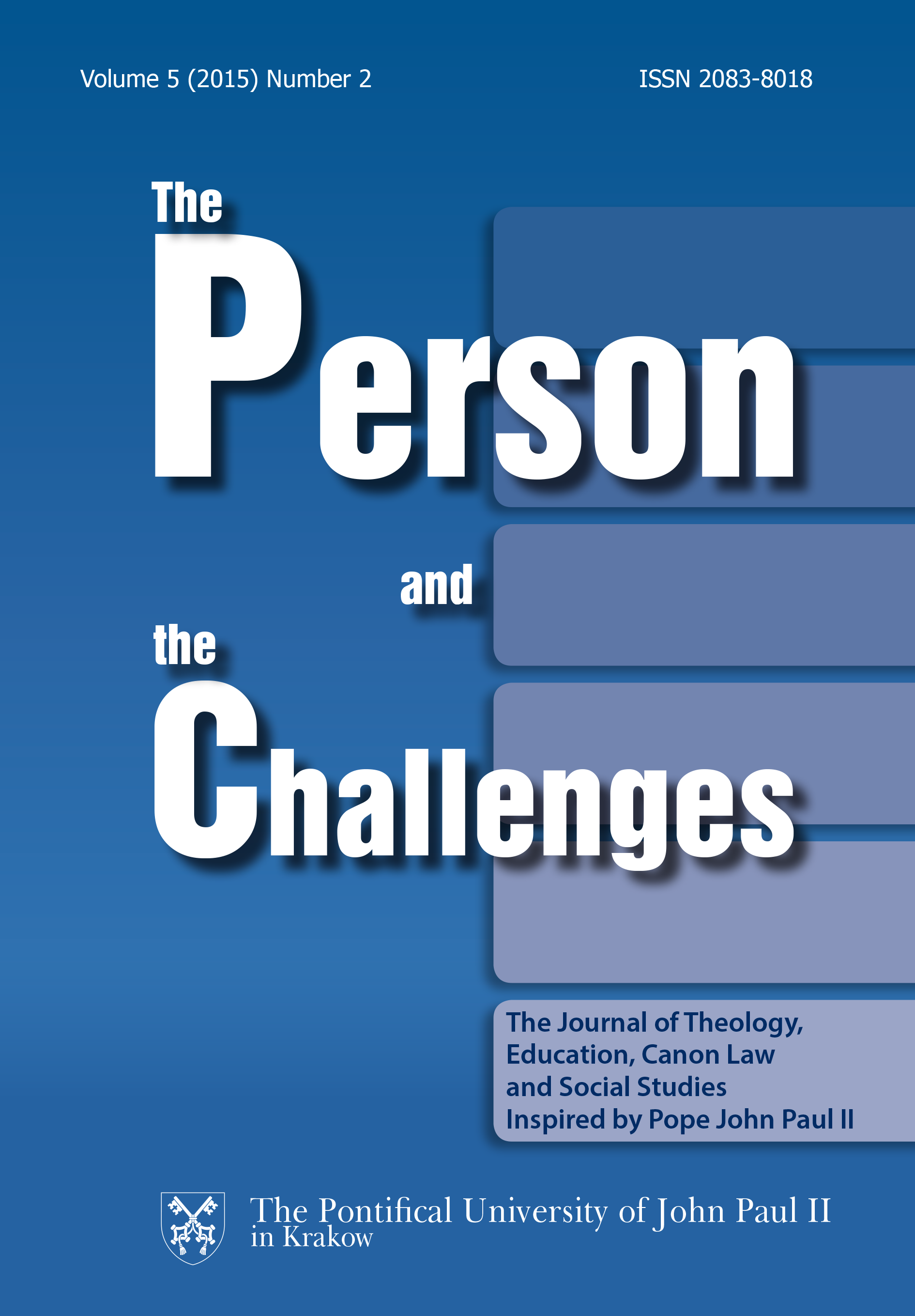The visual principle and the correlation between teaching of the Catholic religion and art education in Polish school
DOI:
https://doi.org/10.15633/pch.1522Keywords:
Catechesis, the visual principle, correlation, picture, religious painting, teaching of the Catholic religion, art education, textbooksAbstract
Contemporary culture – as already noted – is becoming more and more visual. Contemporary catechesis, referring to its rich, centuries-long experience, should also use different types of images. The first part of this article presents the visual principle as one of basic educating principles, and the second part presents the correlation between the teaching of Catholic religion, and art education in Polish schools. One specific example of using religious painting are in textbooks.Masterpieces of painting, created during centuries and expressing particular desires of their creators, still remain an important inspiration, among others, to the religious search. Faith, though strongly anchored in words, needs representations, specific references, which allow receiving, understanding, and experiencing it. Paintings give this possibility, and even – taking into consideration the contemporary civilization – impose the necessity to use them, in order to effectively reach the contemporary receiver.
Using images in education is not only the achievement of specific objectives in catechesis, but also gives an opportunity to creatively engage students and shape their aesthetic sensibility. Working with the image creates the possibility of discovering the beauty, to see it in reality and “keeping the heart”, that is the enrichment of the beauty of one’s humanity.
References
Aranci G., L’ uso delle immagini in alcuni momenti della storia della catechesi, Firenze 2001.
Chałupniak R., Arcydzieła malarstwa w katechezie, Opole 2013.
Chałupniak R., Malarstwo religijne w podręcznikach szkolnych, Opole 2014.
Faith and Beauty. A Theological Aesthetic, ed. E. Farley, Ashgate 2001.
Kawecki W., Teologia piękna. Poszukiwanie locus theologicus w kulturze współczesnej, Poznań 2013.
Lange G., Bilder zum Glauben, München 2002.
Popiołek-Rodzińska I., Wychowanie plastyczne w przedszkolu, in: E. Osewska, J. Stala (eds.), Wychowanie dzieci w wieku przedszkolnym, Tarnów 2005, p. 113–126.
Popiołek-Rodzińska I., Zamirska E., Wychowanie przez sztukę w klasach I-VI, in: J. Stala (ed.), Wychowanie dzieci w młodszym wieku szkolnym. Część I. Wychowanie ogólne, Tarnów 2006, p. 89–110.
Tomasik P., Religia w dialogu z edukacją, Warszawa 2004.
Zellma A., Nowa formuła korelacji w edukacji szkolnej i jej realizacja w nauczaniu religii, “Katecheta” 55 (2011), nr 5, p. 5–16.
Downloads
Published
Issue
Section
License
Copyright (c) 2015 Radosław Chałupniak

This work is licensed under a Creative Commons Attribution 4.0 International License.
Authors who publish with this journal agree to the following terms:
- Authors retain the copyright and full publishing rights without restrictions, and grant the journal right of first publication with the work simultaneously licensed under a Creative Commons Attribution 4.0 International License that allows others to share the work with an acknowledgement of the work's authorship and initial publication in this journal.
- Authors are able to enter into separate, additional contractual arrangements for the non-exclusive distribution of the journal's published version of the work (e.g., post it to an institutional repository or publish it in a book), with an acknowledgement of its initial publication in this journal.
- Authors are permitted and encouraged to post their work online (e.g., in institutional repositories or on their website) prior to and during the submission process, as it can lead to productive exchanges, as well as earlier and greater citation of published work (See The Effect of Open Access).

